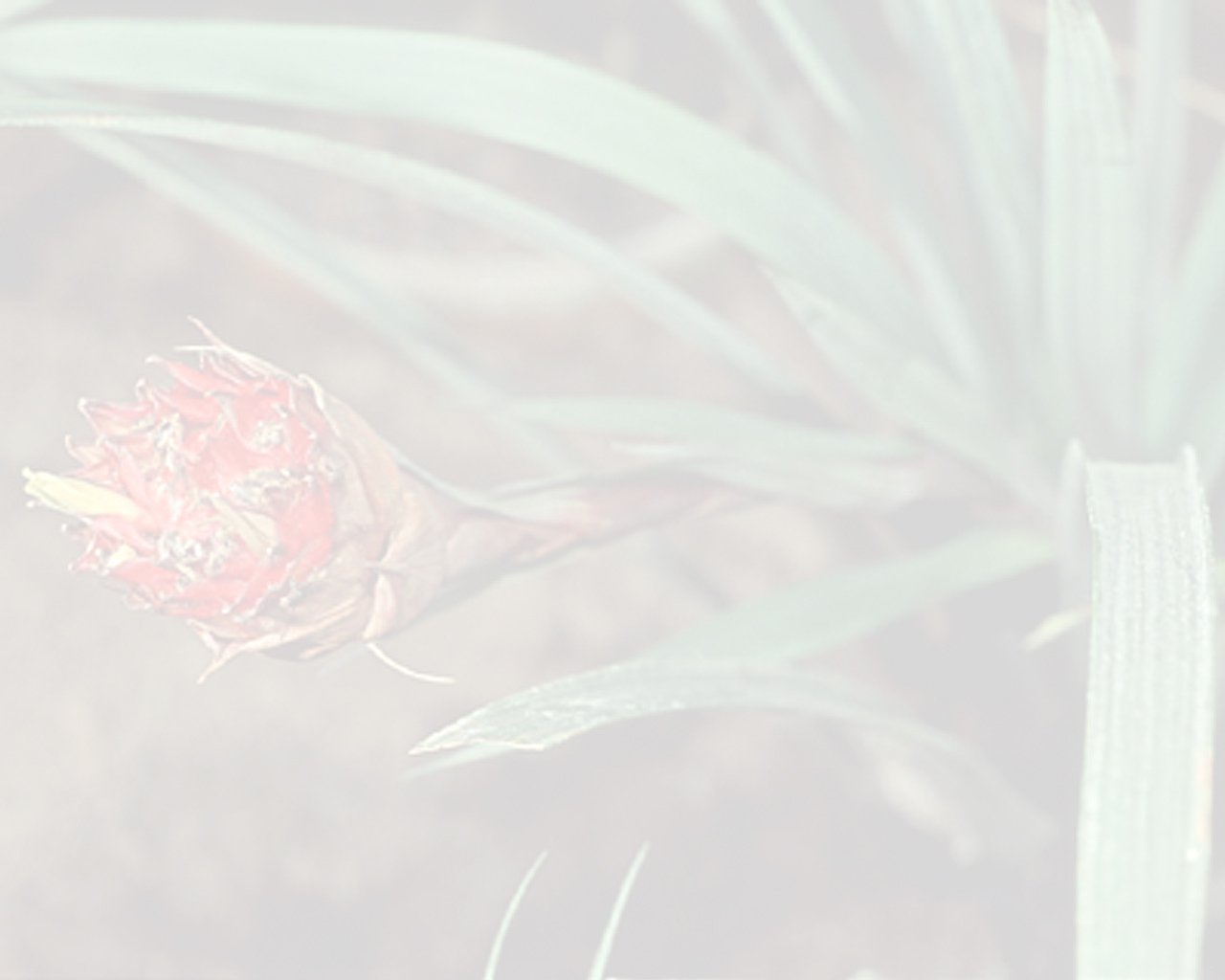

 Guzmania bismarckii Rauh[as Guzmania bismarckii Rauh]
Guzmania bismarckii Rauh[as Guzmania bismarckii Rauh]Observations: —Guzmania bismarckii which is similar to G. lindenii (in vegetative state), differs from the latter in the following characteristics:
1. Plant growing terrestrially, rarely epiphytic, in humid, swampy-sandy forests; leaves broad-ligulate, mostly erect, underneath with prominent, broad ribs, never losing chlorophyll in cultivation as G. lindenii.
2. Inflorescence with sessile or short, petiolated ovoid spikes.
3. Seeds with short, leather brown hairs .
There is no doubt that G. bismarckii is related to G. lindenii, but the difference between the two are so evident that the former may be considered an own species. Guzmania bismarckii is a beautiful species, worthy of cultivation as an ornamental plant.
In 1980, we found in the Dept. of Loreto, Peru, about twenty kilometers west of Rioja, a big guzmania growing terrestrially in a sandy, swamp forest at an altitude of 800 meters.
The plant very much resembled G. lindenii (Andre) Mez with its crossbanded leaves. This discovery made us think that we had found a new locality of G. lindenii, which we had rediscovered some years ago in the mountainous forest near Oxapampa in the Dept. of Chachamayo, at an altitude of 2,000 meters. We had found, unfortunately, only sterile, non-flowering plants. Later we saw the same species in Moyabamba in the collection of Moises Lopez, an orchid collector, who also sold it under the name of G . lindenii. We took back bigger plants to Lima, hoping to bring them into flower there, but in vain; all plants died. It became obvious that they were much more difficult to cultivate than G. lindenii .
We returned in August 1983 to the region of Rioja and Moyabama intending to search for flowering plants of the still-unknown guzmania. But within those few years the landscape had changed completely. The forests bordering the new road, constructed not many years before, had been cut down and replaced with plantations of cultivated plants. An old Indian, to whom we described our plant, told us that there were still some growing in a small section of forest. A young boy led us there and we found many plants, small and big, growing terrestrially in the deep shade of the rainforest. Once more, our search for flowering plants was unsuccessful, but we did find some in full fruit. With that evidence we were able to decide that the Rioja guzmania is completely different from G. lindenii of the Oxapampa region. Although the flowers are still unknown, we shall describe the Rioja guzmania as a new species and dedicate it to Klaus von Bismarck of Lima, Peru, who had assumed in 1980 that it is a new species.Edited from (30-03-2023): Rauh 1984a. Guzmania Bismarckii: A New Species From Northeastern Peru .